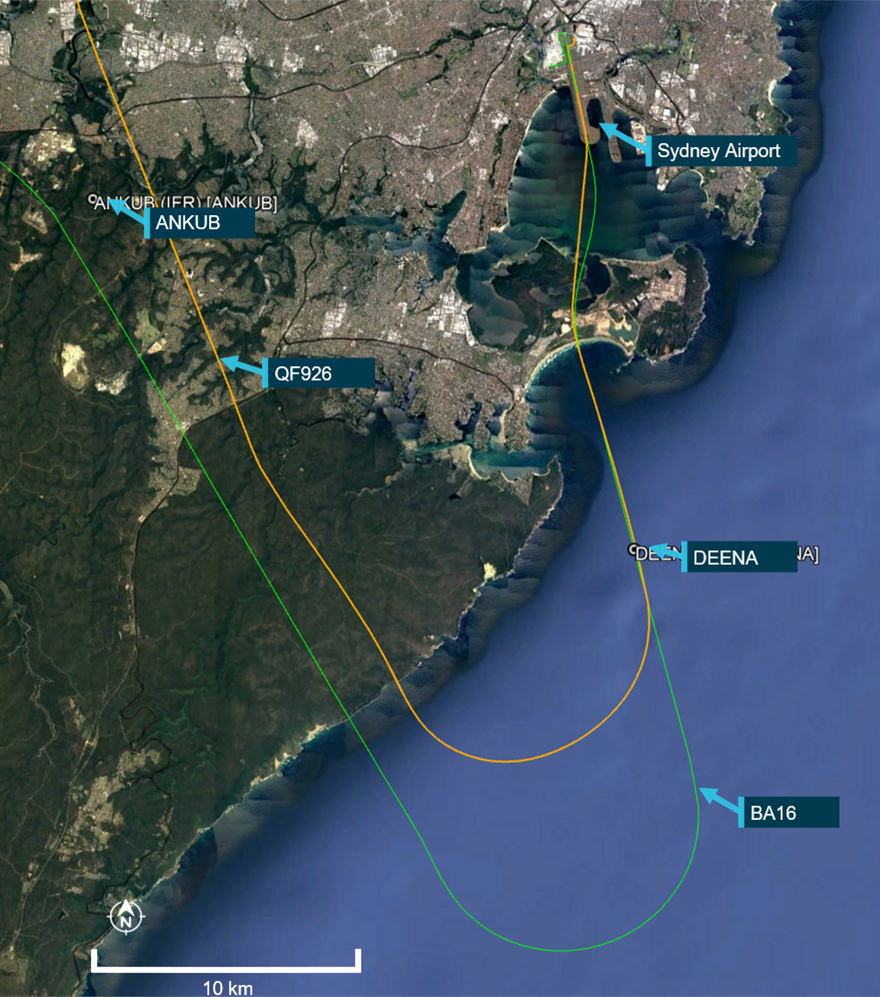
|
Key points
|
The ATSB will monitor the planned introduction of a revised Sydney Airport standard instrument departure (SID), after a loss of separation occurrence involving two widebody airliners shortly after take-off last year.
On the afternoon of 28 September 2022, a Boeing 787-9, operated by British Airways, took off from Sydney’s runway 16R for a scheduled passenger service to Singapore.
Approximately three minutes later, an Airbus A330-200, operated by Qantas, departed the same runway for a scheduled passenger service to Cairns.
Both aircraft were directed to follow the same standard instrument departure (SID) routing, the DEENA 7 SID, for their respective climbs to 28,000 ft.
This SID required the aircraft to meet two separate conditions after take-off before turning to the north-west: they had to pass the DEENA waypoint, and they had to climb to at least 6,000 ft.
“Because aircraft have to satisfy two separate conditions prior to turning, there is no way to ensure aircraft will turn at the same location when conducting the DEENA 7 SID,” ATSB Director Transport Safety Stuart Macleod explained.
In the September incident, the trailing A330 was being used on a domestic flight, with a correspondingly lower fuel load and higher climb performance than it would have had for an international flight.
“The departure controller did not expect this, and instead expected the A330 to have a similar climb performance to the 787 it was following, thus remain behind it and turn at about the same location,” Mr Macleod said.
Instead, the A330 reached 6,000 ft as it passed DEENA, and began its turn about 20 km from the airport. Meanwhile, the heavier 787 reached 6,000 ft some time after passing DEENA, and began its own turn about 25 km from the airport.
This meant the trailing A330 was turning inside the path of the 787, as they both climbed to the same flight level.
During the event, separation between the aircraft reduced to 2.4 NM laterally, and 600 ft vertically – below the required separation standards of either 4 NM laterally (for ‘heavy’ aircraft) or 1,000 ft vertically – before the controller advised the aircraft and separation was re-established.
The British Airways flight crew later advised they had received a traffic collision avoidance system (TCAS) traffic advisory during the event, and the first officer had subsequently visually identified the A330.
“Maintaining separation in high traffic terminal areas, such as Sydney, requires that both controllers and flight crews remain vigilant, maintain open communications, and use the available systems and tools to minimise the risk of errors,” Mr Macleod said.
“When sequencing departures, controllers should consider a number of factors, including how the flight duration (and the associated fuel load) will likely affect aircraft climb performance.”
The ATSB final report notes that, in the last decade in Australia, there have been eight loss of separation occurrences involving aircraft cleared on a SID, where a following aircraft has climbed faster than the preceding aircraft.
Of these, six were at Sydney, and five involved the DEENA 7 SID.
“Airservices Australia has advised the DEENA 7 SID has been redesigned to remove the two conditional requirements of the procedure,” Mr Macleod said.
“The changes are planned to be part of the first implementation package for Western Sydney International Airport, but as the timeframe for this implementation is unknown, the ATSB will continue to actively monitor this open safety issue,” Mr Macleod concluded.
Read the report: Loss of separation involving Airbus A330, VH-EBK and Boeing 787, G-ZBKF, near Sydney Airport, New South Wales, on 28 September 2022


